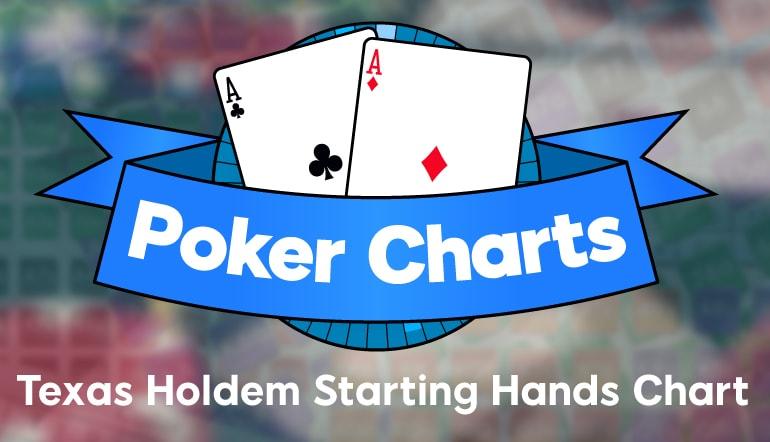Image credit - Danny Maxwell
Whether you're playing with friends or at an online site, the goal of poker is to win. Of course, this is easier said than done today when you consider that there's a wealth of poker strategy available today. But that certainly doesn't mean your case for becoming a successful player is hopeless. This is especially the case if you read the following step-by-step guide on how to win at Texas Holdem poker.
Jul 03, 2016 How to Play Texas Hold’em. Watch our How to Play Texas Hold’em introductory video below and read on underneath for a more detailed look at all of Texas Hold’em’s unique rules. Texas Hold’em is a community card poker game with game play. Winner's Guide To Texas Hold'em Poker. The most comprehensive and powerful book yet written on beating hold'em shows serious players how to play every hand from every position with every type of flop. Learn the 14 categories of starting hands, the 10 most common Hold'em tells, how to evaluate a game for profit, value of deception, art of bluffing. Beginner's Guide to Texas Hold'em Poker- April 20th, 2005 This is a complete beginner's guide to becoming a winning player at Texas Hold'em, written by Jeff, our own 'Ace of Spades'. Jeff covers each step of Hold'em, guiding you through pre-flop hand selection, calculating odds, and proper play on the blinds, flop, turn and river.
Basic Texas Holdem Poker Strategy
 gain an understanding of simple poker math concepts.'Pot odds' is among the most-basic and helpful because this helps determine whether or not you should make a call post-flop. For instance, you and a single opponent see the flop and the pot is worth $10; your opponent bets $5 and you are now left deciding whether it's worth risking $5 to win a pot that's worth $15 (including opponent's bet). This makes your pot odds 15:5, or 3:1, meaning you need better than a 3:1 chance of hitting your drawing hand to make this a profitable call.
gain an understanding of simple poker math concepts.'Pot odds' is among the most-basic and helpful because this helps determine whether or not you should make a call post-flop. For instance, you and a single opponent see the flop and the pot is worth $10; your opponent bets $5 and you are now left deciding whether it's worth risking $5 to win a pot that's worth $15 (including opponent's bet). This makes your pot odds 15:5, or 3:1, meaning you need better than a 3:1 chance of hitting your drawing hand to make this a profitable call.Study Opponents and Focus
Image Credit - Yanning Van De Wouwer
The goal is to build a profile of everybody at the table so you can figure out what range they play in each situation. For example, if you see another player get caught trying to steal blinds with 6-5 unsuited in late position, you know that they have a wide range in these situations, allowing you to call against them with more hands.
How to be Good at Poker - Intermediate Tips
Tools for learning Poker Strategy
Image credit - Raed Photography
- Poker Articles - Abundant, and very good for learning the basics of how to win at poker. It's especially nice when articles are categorized in beginner, intermediate and advanced sections.
- Poker Books - These are a good way to get inside the head of a pro and see how they think when playing the game. Just be sure that the concepts are relevant and not outdated, though.
- Training Videos - There was an explosion of training videos in the late 2000s, as players moved away from books/articles and craved visual strategy. The great thing about training videos is that you get to see players actually playing online poker as they discuss different topics. But beware that not everybody who does training videos is a long-term winner.
- Live Streaming (Twitch) - This has become one of the most-popular ways to learn poker tips because you get to watch skilled pros in real-time. Plus, you might also be entertained by some of the better Twitch performers. Jason Somerville,Bertrand Grospellier and Jaime Staples have become stars through live streaming.
- Coaching - You can get one-on-one training by hiring a coach. The quality of coaching you get often depends on whom you hire and how much money you spend. But this option is worth pursuing if you want a good player to critique your play and explain what you need to do to get better.
- Heads-Up Displays (HUDs) - These are tools that help keep track of various stats on opponents and your own play during a session. Some online poker sites have banned these tools while others still allow you to use HUDs since they aren't technically cheating.
Texas Holdem is the most popular card game in the world right now. It’s everywhere you look; your buddy is running a home game, large tournament winners are mentioned in the news, games are shown on TV and poker is available in brick and mortar casinos, on your phone and online.
Poker is huge, no doubt about it. Everyday new people are signing up online to play their first hand of Texas Holdem. Possibly even turn it into a career.
So because the game is so popular and people are signing up everyday to learn how to play, we thought we’d create a guide to help beginners get started. Take them by the hand and teach them the rules, lingo and basic strategies to help them become profitable faster. I think we’ve accomplished that. Take a look at our guides below and see for yourself.
Texas Holdem Guides
Below are our 4 guides to Texas Holdem. These guides were written with the beginner in mind. We wanted you to be able to read these, not knowing a thing about Texas Holdem, then being able to sit down at your first game and act as if you’ve been playing for years.
These guides aren’t in any particular order, although I do recommend starting with Part 1 since that contains the rules, betting options and formats. Other than that, take your time and take notes, and I’m sure you’ll catch on quickly.
Texas Holdem Guide Part 1 – Texas Hold’em Rules & Betting
The absolute basics are covered in the first part of our holdem guide. The idea is to take someone new to Texas Holdem and give them just enough information so that they can play their first game. The topics I cover in this guide include the rules to Texas Holdem, what hands win in Texas Holdem, betting formats & actions and betting basics.
Texas Holdem Guide Part 2 – Understanding poker math and table image
Our second guide builds on the first one. Now that you already know the rules it’s time to learn how to start playing poker profitably. The first thing I cover is table image aka how your opponents perceive you, how you perceive them and how this will affect your strategy. After that I cover poker math. This is basic math, like addition, multiplication and division. So if you finished grade school math you should be fine. You’ll want to learn this math so you know how to draw to hands profitably, and so that you can see why drawing to gut-shot draws is nearly always a bad idea.
Texas Hold’em Guide Part 3
Part 3 of our Texas Holdem guide focuses on a few areas that new players get wrong — very wrong. To start, I talk about table position, where you sit in relation to your opponents and where you sit in relation to the dealer button. More importantly, I explain why table position is the most important concept to understand in poker and how it affects your strategy. I then move into playing from the blinds, which is an extension of table position. Last, I talk about bluffing, including what makes a successful bluff and how to make sure your bluffs work more often than not.
Read Part 3 Now
Texas Hold’em Guide Part 4 – Best Starting Hands & Variance
In our last guide I cover a few more topics I feel are important for new poker players to learn and understand. I first cover starting hands, including why having a static chart is a bad idea and what you should do instead. I then discuss a big leak that new (or bad) players have — always calling instead of raising — and why it’s costing you money. I then talk about dealing with bad beats and why you shouldn’t let them bother you. I finish off the guide with 10 tips that will improve your poker game.
History of Texas Holdem
The history of origin of Texas Holdem is unclear. However, it’s been said that holdem originated in Robstown, Texas, back in the early 1900s. That’s where the “Texas” in Texas Holdem comes from.
The game didn’t stay there long though. It made it’s way to Las Vegas in the late 1960s, instantly becoming a favorite of professional poker players. They liked holdem because there were more betting rounds compared to games like 5-card draw, creating more opportunities to outthink and outplay their opponents.
Texas Holdem started to increase with popularity with the start of the World Series of Poker (WSOP). Originally the Gambling Fraternity Convention, Benny and Jack Binion acquired the rights to the convention and renamed it the World Series of Poker in 1970.
The early days of the WSOP would shock most players today. For example, take a look at these Main Event stats:
- The first WSOP Main Event tournament had 7 players. The buy-in was $5,000.
- The first 6-figure prize pool was in 1973.
- The first time the tournament had 100+ players was in 1982.
- The first place winner didn’t start receiving 1 million dollar prizes until 1991.
- The Main Event field didn’t exceed 1,000 players until 2004.
This is pretty shocking given the thousands of players that enter the tournament nowadays, or the millions of dollars that first place earns.

But the WSOP (and the Main Event) just didn’t take off until the 2004 season. This was after the 2003 Main Event where Chris Moneymaker, your average accountant, won a seat to the Main Event for $39 on PokerStars and parlayed that into a Main Event win. That win was good for a bracelet, $2.5 million dollars and overnight celebrity status.
From there Texas Holdem exploded, being dubbed the Moneymaker Effect. The following WSOP (2004) saw a 300% increase in attendance, doubling the first place prize for first place.

The WSOP has only grown since then. Every WSOP since 2006 has seen over 6,000 players, with a couple Main Events exceeding 7,000. First place prizes have been as high as 12 million, with the average being right around 8 million.
Winners Guide To Texas Holdem Poker Online
It’s not just live poker that exploded as a result of Moneymaker either. Online poker has, too. There are half a million players (if not more) online everyday, playing for fun and for real money. Hundreds of thousands, if not millions, are wagered everyday.
Because the internet enables players to play lots of hand, dive into the math and play multiple tables, players are getting better at breakneck speeds. No longer does it take a dedicated player years of his life to become a great player. It’s now possible to become a great player, earning 6 and 7-figure incomes annually, in just a matter of months, weeks or even days.
Free Texas Holdem Poker Games
So that leaves me one question; if they can do it — if Moneymaker can do it — then why not you?